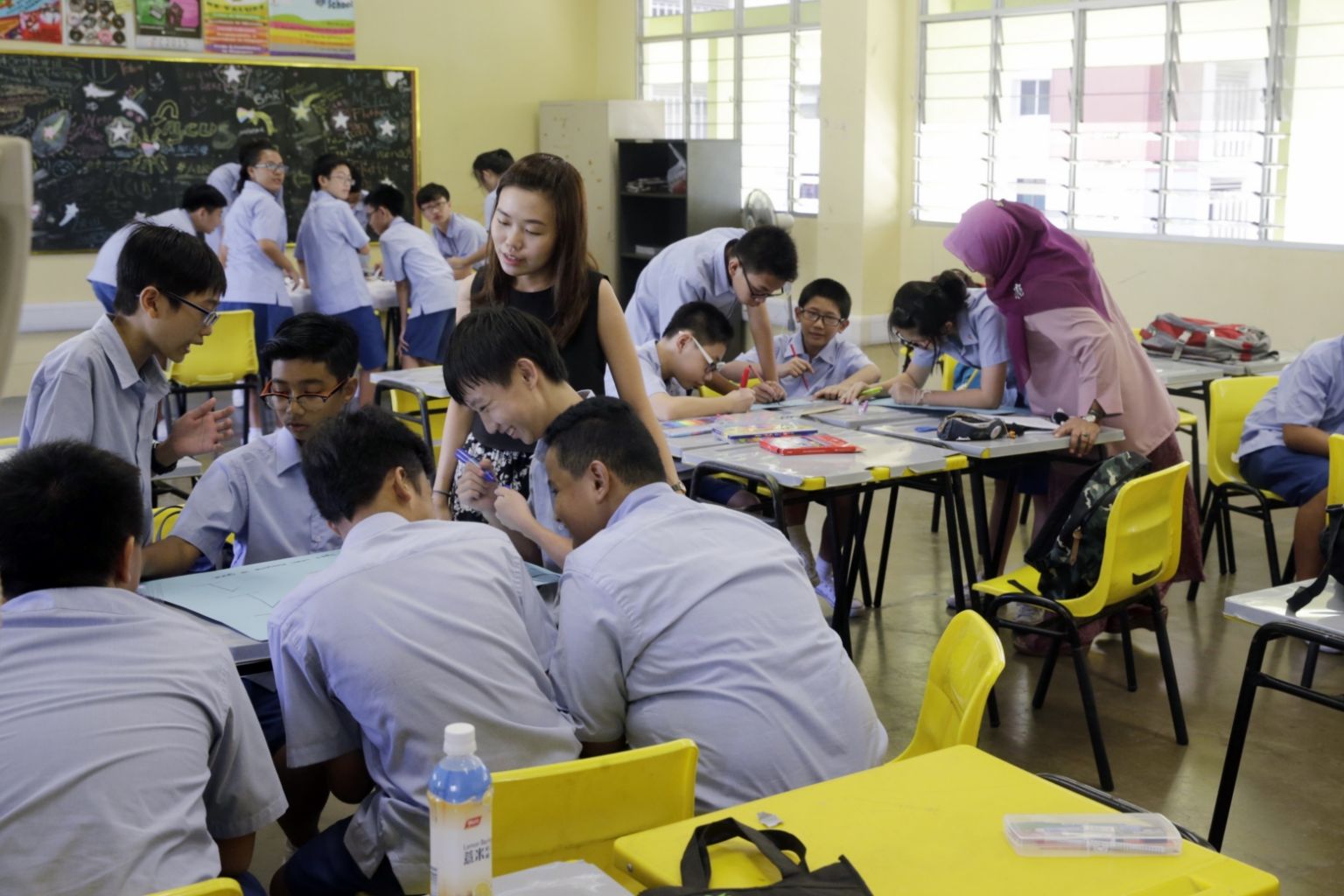Social stratification would have been worse without streaming, says Ong Ye Kung
Sign up now: Get tips on how to help your child succeed

Students at Ping Yi Secondary School. Streaming was introduced from the 1980s to arrest the high school attrition rate, said Education Minister Ong Ye Kung.
PHOTO: ST FILE
Follow topic:
SINGAPORE - There have been concerns about the Normal stream and its negative side effects, but without streaming, social stratification would have worsened, Education Minister Ong Ye Kung said on Tuesday (March 5).
In the early years of Singapore's independence in the 1970s, a third of every cohort dropped out of school. Today, the figure is less than 1 per cent.
"So I urge members not to casually just juxtapose social stratification with streaming and just casually put them together. Because without reducing attrition rates through streaming, social stratification would have been far, far worse," said Mr Ong.
The Normal (Technical) stream, which was introduced in 1994, contributed significantly to this outcome, he said, adding: "So till today, we are benefiting from the legacy of the 'efficiency-driven' education system."
Streaming was introduced from the 1980s to arrest the high school attrition rate, he said. "We were concerned about the huge number of dropouts who could not read or write at the end of primary school. We had to move away from a one-size-fits-all education system because if a student sat in class, does not understand the lesson and cannot catch up, they would lose interest and then they will drop out."
Over time, parents and students also saw the benefit of learning at a pace and rigour suited to their academic abilities, he said.
There are many students who in fact prefer a stream which allows them to study at a more comfortable pace, and they gain confidence from being a "bigger fish in a smaller pond", he added.
But Mr Ong also acknowledged the pitfalls of streaming. And the Ministry of Education (MOE) has grappled with the trade-off between customisation of learning and the downside of stigmatisation, he said, and it has made changes over the years.
Starting from the mid 2000s, the MOE phased out primary school streaming over four years. It first merged EM1 and EM2, and by 2008, it had a single primary school course instead of three streams. Pupils could learn subjects at different subjects, under a scheme known as subject-based banding, said Mr Ong.
Stressing that subject-based banding was not merely a cosmetic change, Mr Ong said that many pupils who would have been in EM3 ended up taking one or more subjects at a higher level.
"So this way, we continued to reap the benefits of customisation of education, but minimised the downsides of labelling," he added.
The MOE later extended subject-based banding to secondary schools, starting with upper secondary students, and in 2014, expanded it to lower secondary students.
Mr Ong said the students in the pilot scheme have performed comparably with their Express peers. Last year, 25 per cent of Secondary 4 N(A) students who took O-level English got A1 or A2, compared to 24 per cent for Express students.
For O-level mathematics, 26 per cent of N(A) students got A1 or A2, compared to 50 per cent for Express students, and for O-level combined science, it was 33 per cent for N(A) students and 34 per cent for Express students.
"I think the Normal-stream students have held their own," said Mr Ong. "Given the positive outcomes, last year, we expanded subject-based banding nationwide."

